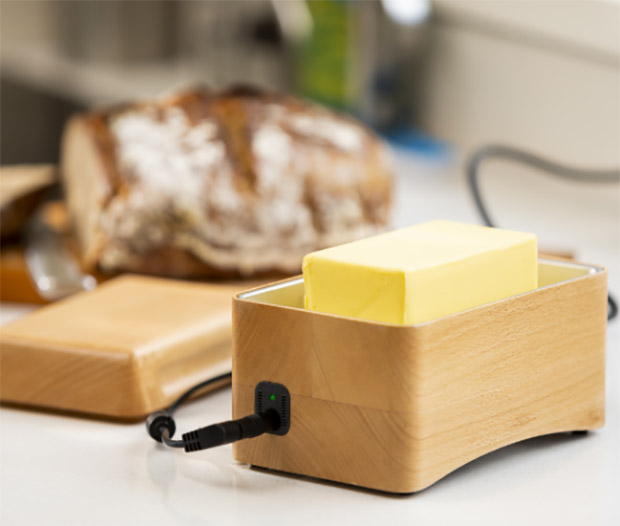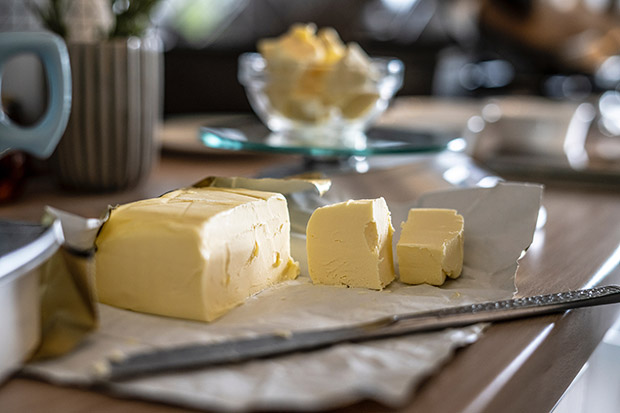
Lucy Corry: Making butter better
Lucy Corry has firm opinions on the softness of butter.
In AA Milne’s delightful 1925 poem, The King’s Breakfast, the King is adamant that he needs “a little butter for the Royal slice of bread”. Nothing else will do. I imagine the new King probably has other things on his mind right now, but the spreadability of butter on one’s toast remains a key issue for many of us.
Once upon a time, New Zealand households dealt with this pressing and potentially divisive problem by buying fridges that had built-in butter conditioners. These were small units with a little door and temperature gauge, plus a little lidded tray just the right size for a block of butter. Everyone had one (or they risked being stuck with ‘only marge in the fridge)’.
But as time went on, fridge makers realised that having a heating unit in a device devoted to cooling was somewhat counterproductive. Butter conditioners gradually got phased out (much to the chagrin of some devotees, who have struggled to find a suitable alternative).

Some reckon a ‘butter bell’ — a ceramic crock based on a piece of French kitchen ingenuity called a ‘beurrier’ — is the answer. A butter bell, also known as a butter crock, has two parts. Butter gets packed into a kind of cup with a lid attached to its base. The butter-filled cup (buttercup?!) is then inverted into a larger casing filled with water. The idea is that this keeps the butter airtight, but also at an ambient temperature.
If high-tech solutions are more your thing, Auckland engineer Logan Gill might have the answer. Logan has spent the last five years tinkering with a bench-top butter conditioner called ‘Smoothly’. This gadget, which can be controlled via smartphone app, uses infra-red sensors to keep the butter at the user’s preferred state of spreadability. Having devoted no small amount of brainpower and capital to this project, Logan is bordering on butter-obsessed. He’s hopeful that Smoothly, which launches a Kickstarter funding campaign at the end of the month, will convince spreadable butter fans to ditch plastic tubs of butter for good.

Personally, I’ve never been a fan of the spreadable stuff. I’m fine with cold butter on my toast. Cold butter is easier to slice (like cheese) and comes with the added satisfaction of being able to see your teeth marks in it (on the toast, not bitten from the block). However, I do understand that there are times when soft butter is required. If you have a butter emergency (and like me, don’t have a microwave), here’s how to soften it with ease.
GET GRATING
Making a cake requiring creaming butter and sugar? Grating fridge-cold butter is a speedy way to help it soften. The simplest way to do this is to grate the butter into a bowl set over some scales (hold the butter by its paper to avoid greasy fingers) until the desired weight is achieved. If you’re using a food processor to make the cake, you can weigh the butter, then grate it using the relevant attachment before whizzing as normal.
CHOP, CHOP
If grating is too tedious a task (and I admit, even though it’s my favourite method it does sometimes feel a bridge too far), then get busy with a knife instead. Chopping butter into small cubes or slices will help it become more malleable faster than if it remained in a solid block.
BEAT IT
Here’s a multi-tasking method that will help you exorcise the worries of the day and soften the butter at the same time. Simply wrap the butter in baking paper (or a reusable, fairly sturdy plastic bag) and gently ‘beat’ it with a rolling pin or a meat mallet. Mix up techniques here – pound the butter, then turn it over and roll the other side. Pound, flip, then roll again. You should feel the butter softening and becoming more malleable. If you don’t have the appropriate tools, then use your hands (the ultimate multi-tools. with the added advantage of built-in body heat).

